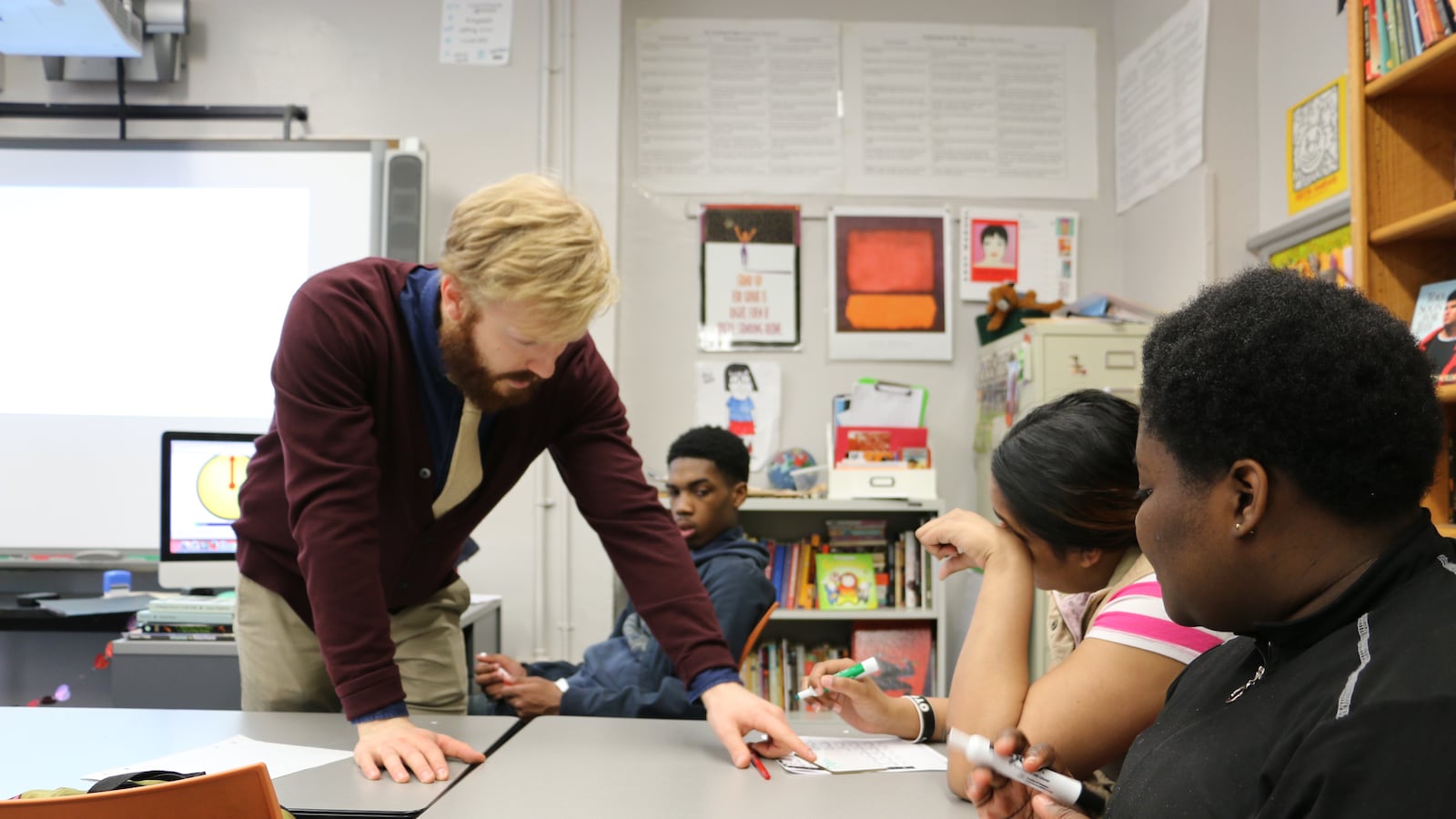Jamie Hawkins marched to the front of a Brooklyn auditorium Tuesday night holding two pieces of paper.
One had information from her son’s Individualized Education Program, which showed that when he entered high school, he read at a second-grade level and did math at a sixth-grade level. The other, she said proudly, proved he graduated from high school.
The reason her son finished school is he attended Brooklyn Frontiers High School, she said, one of several schools in New York City designed specifically for students who have fallen behind.
“He got the skills that he needed,” she explained after her testimony. When asked if he would have graduated without Brooklyn Frontiers she said, “No. Absolutely not.”
Students, teachers and parents from the city’s transfer high schools — which serve students who are over-age and under-credited — crowded into the Prospect Heights Educational Campus on Tuesday for a hearing on the Every Student Succeeds Act, which they fear will treat their schools unfairly.
These schools present a conundrum for state officials. The new law requires that schools with graduation rates under 67 percent are targeted for improvement. But for transfer schools, many people testified at the hearing, that is often an unrealistic standard.
“The language of this legislation, the ESSA legislation, puts our schools in grave danger,” said Rachel Forsyth, director of partnership schools at Good Shepherd Services, a nonprofit that works in multiple transfer schools.
So what will happen to transfer schools under New York’s draft ESSA plan? Are they really in danger? Here’s what we found out:
What does the plan currently say?
The state’s draft plan does not separate the way it evaluates transfer schools from how it judges traditional high schools — but it does gives all high schools some wiggle room.
Instead of using on-time (four-year) graduation rates, the state allows six-year graduation rates in its draft plan. That might not be enough for transfer schools, though. The average six-year graduation rate for transfer schools is 46.7 percent.
If a school does not meet a six-year graduation rate of 67 percent, it will be identified as a school that needs improvement.
Can the state make an exception for transfer schools under the law?
The state says all high schools have to reach a 67 percent graduation rate. Based on information the state’s education department has received from the U.S. Department of Education, there is no exemption for transfer high schools, state officials said.
But advocates say the law offers more leeway. Under the regulations approved by former U.S. Education Secretary John King, schools that serve special populations — such as alternative schools — were permitted to use different metrics than traditional high schools.
Those regulations have been undone by Congress, but the fact that they existed before shows the law allows that flexibility, said Ian Rosenblum, executive director of EdTrust-NY.
“We believe that the state can and should propose a different methodology for identifying specialized schools, such as transfer schools,” Rosenblum said.
What will happen if transfer schools are identified for improvement?
At one point during the hearing, a transfer school advocate gestured to the crowd and declared that if this plan moves forward, all the transfer schools represented in the room would soon cease to exist.
That is very unlikely to come to pass. Even if a school is identified as needing improvement, it would probably be several years before it could face any serious consequences under the new law, according to the state’s draft.
If a school is identified for Comprehensive School Improvement (CSI), it has three years to receive extra support and to implement an improvement plan. Then, it could be put into the state’s receivership program, which means it would likely have another two years to demonstrate improvement. If it does not demonstrate enough improvement, it risks being taken over by an outside receiver.
The state has already proven itself lenient in forcing an independent receiver on schools. So far, only one school in New York state has been threatened with takeover. According to state officials, once schools are in receivership, the state education commissioner has some flexibility in tracking their progress and determining whether schools should still be deemed struggling.
Still, any threat looms large for transfer schools, whose advocates say even if the worst-case scenario never plays out, they are still being rated by unfair metrics.
“We’re already working with kids who have been told repeatedly they are failures. Now we’re looking at a system where 90 percent of the [transfer] schools in the city will be looked at as failing schools,” Forsyth said. “I don’t think it’s really understanding the population we’re working with.”
State officials said they are aware of these concerns and will work to come up with a solution.

